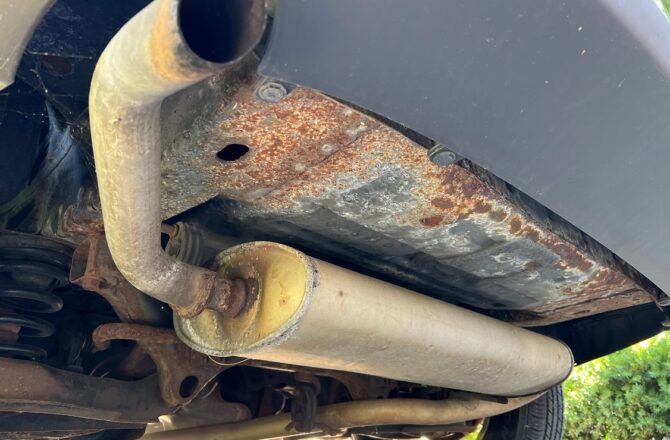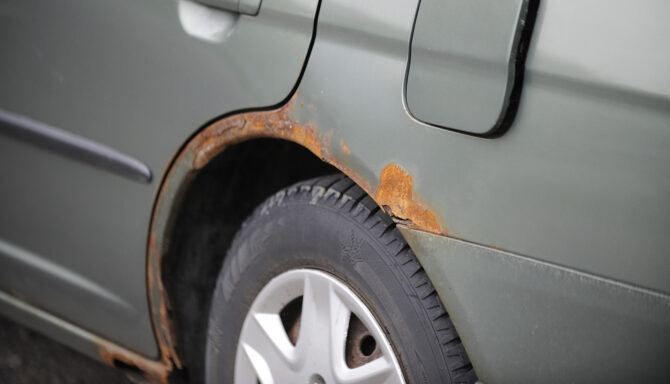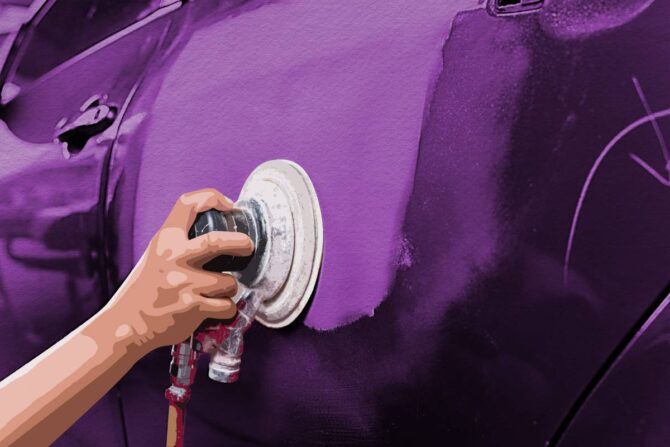
Rust is the eventual fate of all cars that aren’t treated properly. Understanding the dangers of driving a car with rust is important. It’s useful to learn about rust when buying your next car. The safety of you and your family is compromised when driving a rusty vehicle.
Let’s ensure you take the appropriate action if you find your vehicle has a few unwanted rust patches.
How Does Rust Appear on My Car?
Mark from undersealing specialists Preserve Protect said “Your car’s chassis and bodywork are made from steel. When bare steel is exposed, it reacts with oxygen and water molecules, causing the familiar brown staining we see on rust-ridden cars.”
What Affects the Amount of Rust Appearing on My Car?

Source: thedrive.com
Many factors affect the amount of rust appearing. Climate, Age, Materials, and Treatment, as well as your Driving Style.
- Climate: Exposing to rain, snow, and ice (and salt-gritted roads) will all accelerate the corrosion of your bodywork.
- Age: Wear and tear is normal for an aging vehicle. Scratches and dents on your bodywork will cause paint to strip, leaving bare metal surfaces that cause rust spots to appear.
- Materials: The older your vehicle, the more likely it is to not be treated with rust-proof coatings. This is why your carefully driven classic car might have a few more spots despite having fewer miles on the clock!
- Driving Style: Driving through puddles and off-roading accelerates the rate of corrosion if you do not take the steps to prevent it.
Dangers of Driving A Car with Rust

Source: jdcollision.ca
Engineers spend years perfecting the cars’ structure to ensure you are safe during a crash. The car’s structure carefully deforms when hitting another object, reducing the occupant’s chance of injury. However, this is all dependent on the car not having deep rust areas.
As rust build-up reduces the structural integrity of a chassis and can be dangerous.
Rust that causes holes in your bodywork can also expose gearboxes, engine bays, and suspension components to the elements. All of these are integral parts of a car and without early treatment, they can fail, costing you thousands in repair fees.
Rusting bodywork also exposes sharp metal, which can cause injury. It is particularly unsafe when children and animals are near vehicles that have lots of rust.
Although getting rust on your skin isn’t harmful, there is a possibility of getting tetanus from a wound created by a rusty metal, as a type of bacteria can form on the rusty object.
What Can I Do to Treat Rust?

Source: cars.com
Classic and imported cars are especially prone to underbody rust. It is always advised to treat these vehicles with rust protection such as Dinitrol. The process involves carefully identifying and addressing rust spots, cleaning the whole underbody, and treating the area with layers of protection.
For rust that appears on bodywork, the preparation process is similar. You just need to ensure all rust is removed, and carefully sand down the area to allow the fiber repair gel treatment to work. The area also needs to be primed and repainted carefully afterward, so as to match the colour of the original bodywork.
Both of these methods can go wrong when not performed correctly, which is why it is advised to use professionals’ help when treating vehicle rust.



